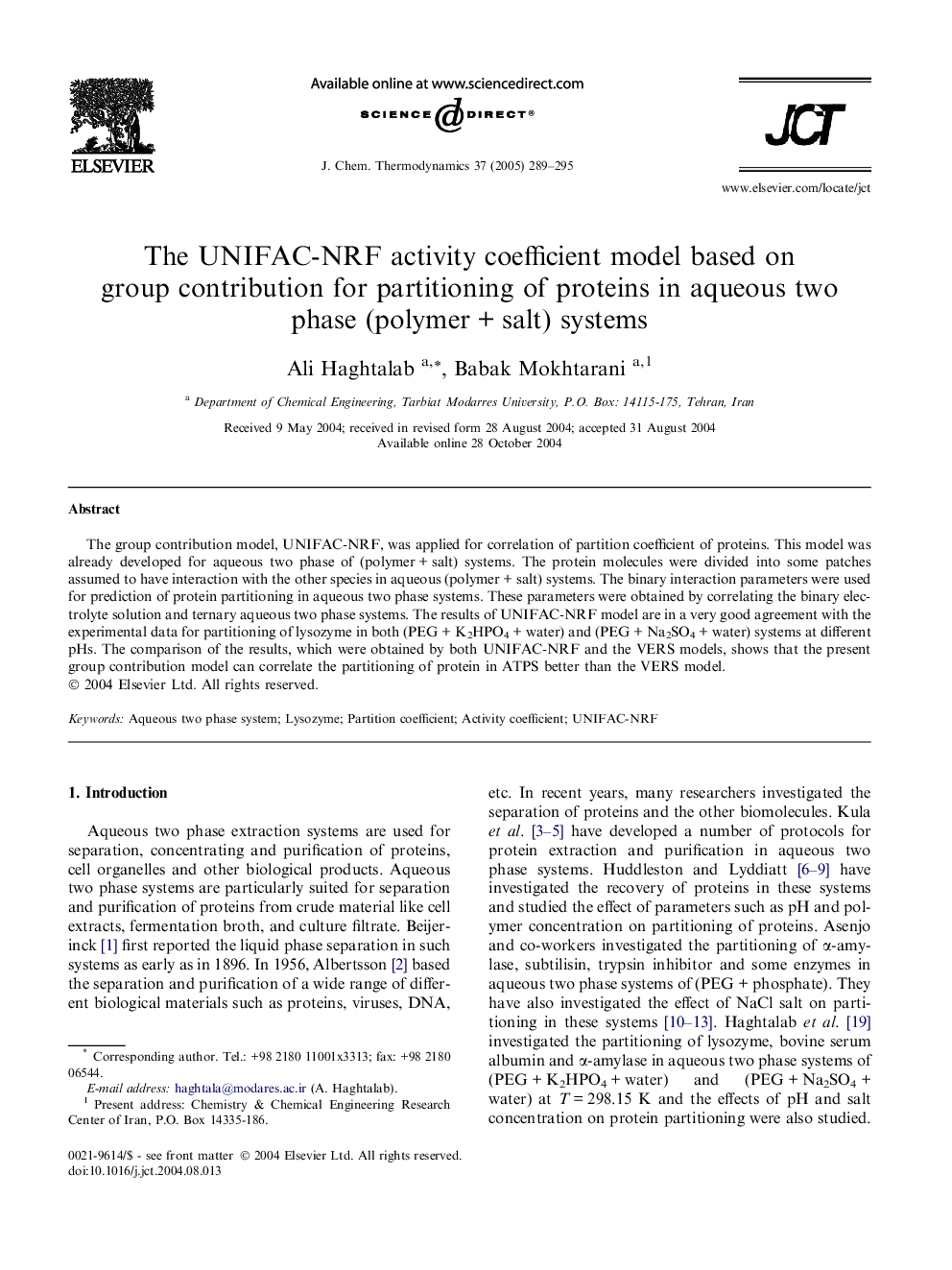| Article ID | Journal | Published Year | Pages | File Type |
|---|---|---|---|---|
| 9633613 | The Journal of Chemical Thermodynamics | 2005 | 7 Pages |
Abstract
The group contribution model, UNIFAC-NRF, was applied for correlation of partition coefficient of proteins. This model was already developed for aqueous two phase of (polymer + salt) systems. The protein molecules were divided into some patches assumed to have interaction with the other species in aqueous (polymer + salt) systems. The binary interaction parameters were used for prediction of protein partitioning in aqueous two phase systems. These parameters were obtained by correlating the binary electrolyte solution and ternary aqueous two phase systems. The results of UNIFAC-NRF model are in a very good agreement with the experimental data for partitioning of lysozyme in both (PEG + K2HPO4 + water) and (PEG + Na2SO4 + water) systems at different pHs. The comparison of the results, which were obtained by both UNIFAC-NRF and the VERS models, shows that the present group contribution model can correlate the partitioning of protein in ATPS better than the VERS model.
Related Topics
Physical Sciences and Engineering
Chemical Engineering
Chemical Engineering (General)
Authors
Ali Haghtalab, Babak Mokhtarani,
